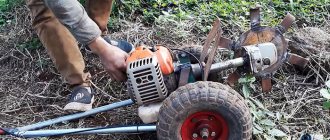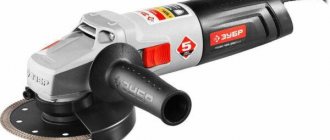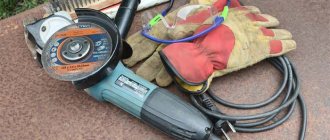There are many reasons to climb a tree: to cut branches, to be safe, or to eliminate a threat that may be from above. Learning how to climb a tree safely and effectively is the best way to protect yourself and those around you.
Some people think it's as simple as one hand in front of the other, but losing your grip is quite easy, and falling from a height can even kill you. There are safer ways to solve the problem you are facing depending on what team you were working with at the time.
Clothes are important
To stay safe when climbing trees, it is important to know what you are wearing.
You want your clothing to be loose enough to allow for a wide range of movement. But keep in mind that clothing that is too loose can cause branches to get caught, and getting stuck is not only embarrassing, but also dangerous.
You'll want to remove any loose jewelry, such as necklaces or bracelets, and remove unnecessary accessories, as these can also get caught when climbing. Shoes with good traction are also important to provide the traction you'll need to stay on the branches you're climbing. If you don't have such shoes, then barefoot climbing is definitely a better alternative.
Inspecting a tree
To determine which tree is suitable for climbing, you must take a step back and carefully examine each one. You'll need a large tree with strong branches over six inches in diameter; Any less and they will break under your weight. You should avoid trees that have any or a combination of the following:
- Strange figures in or on a tree.
- Deep cracks in tree trunks.
- areas of sunken or missing bark
- In conifers, a forked top is a sign of decay.
It is also important to immediately inspect the area around the base of the tree. Make sure the base of the tree is at least three feet all around and look for any of the following signs:
- mushrooms or mushrooms that grow on or around a tree
- Lots of dead branches lying on the ground around the tree.
- A large hole or several small ones at the base.
- Cut out roots or any signs of uprooting.
You also want to look for local hazards near the tree you want to climb to make sure it is safe. These hazards may be difficult to spot from the ground, so it is important to pay attention to:
- trees that have ten feet of power lines
- Large branches that were broken and stuck in the tree.
- trees that have large animal nests or bee/wasp colonies; being bitten or bitten is a surefire way to make you fall and hurt yourself
And, if you find that your tree is protected from all these dangers, there are still climate conditions that you have to deal with. The tree may be strong and resilient, but inclement weather can make the activity even more dangerous. Do not climb during thunderstorms or strong winds as this increases the risk of injury and/or electrical shock.
Rain can make branches slipperier than you imagine, and you could end up falling. Cold temperatures tend to make branches more fragile and may break more easily under their weight. If you have no other choice, you should test each branch with your weight before deciding to use it as support.
Claw-holes in Irkutsk
Set of replacement studs for LU 2 and LU 3, with hard-tipped conical inserts made of VK 8 alloy. Purpose of the product: safety at heights Material of execution: VK 8 alloy Brief description: Set of replaceable studs for LU 2 and LU 3, with hard-tipped cones
- In stock
- Wholesale / Retail
- 13.12.21
“Baikal Special Project” supplies products under the “KVT” brand to colleagues in the Irkutsk region, Buryatia and Yakutia.
- In stock
- Wholesale
- 18.08.21
Always available in warehouse in Irkutsk. Profitable price. Flexible payment terms!
- In stock
- Wholesale / Retail
- 19.11.21
Iron guarantees of high quality. Fast cutting and delivery throughout Russia. Wholesale and retail prices. Wide range of rolled metal products.
- In stock
- Wholesale / Retail
- 01.11.21
Main characteristics of the product. Article: 23300042. Packaging, pcs.: 1. Delivery from Novosibirsk.
- In stock
- Wholesale / Retail
- 06.12.21
An important safety feature allows a worker to quickly and safely climb onto a reinforced concrete support of an overhead power transmission line without the use of special equipment.
- In stock
- Wholesale
- 10.12.21
In our product line you will find the best offer. Confirmation of product quality with the necessary documentation is guaranteed.
- In stock
- Wholesale / Retail
- 03.11.21
Tree climbing peaks PD-003M are used to move along the trunks of coniferous and deciduous trees. The kit comes with two types of spikes - small 70mm and large 100mm.
- To order
- Wholesale
- 10.12.21
Article "Minimax": 0011300128. Unit of measurement: pair. Brand: YaEMZ. Weight, kg: 6.20.
- In stock
- Wholesale
- 13.12.21
Test and operational load: 180 kgf per manhole Operating conditions: From -40ºС to +50ºС We work only with legal entities, payment only by bank transfer.
- To order
- Wholesale
- 09.12.21
- In stock
- Wholesale / Retail
- 12.12.21
- In stock
- Wholesale / Retail
- 13.12.21
- In stock
- Wholesale
- 18.08.21
Set of spikes for LU-2 and LU-3 KVT. Includes 8 pieces.
- In stock
- Wholesale / Retail
- 01.11.21
Flexible system of individual discounts. Free delivery throughout Novosibirsk.
- In stock
- Wholesale / Retail
- 01.11.21
Certified equipment manufactured in accordance with GOST. Individual consultations on products. Delivery from Novosibirsk.
- In stock
- Wholesale / Retail
- 06.12.21
A large selection of workwear, tourism, hunting, for various professions, as well as work shoes and personal protective equipment.
- In stock
- Wholesale / Retail
- 06.12.21
- In stock
- Wholesale
- 10.12.21
List of quality products on the company’s website. The products have all the necessary quality certificates
- In stock
- Wholesale
- 10.12.21
Full range of products in stock. The products comply with GOST standards.
- In stock
- Wholesale / Retail
- 06.12.21
- In stock
- Wholesale / Retail
- 06.12.21
- In stock
- Wholesale / Retail
- 06.12.21
- In stock
- Wholesale / Retail
- 03.11.21
Universal manholes LU-2 are an inexpensive, indispensable device for quickly lifting and lowering trapezoidal reinforced concrete pillars of power line towers of types SV95, SV105, SV110.
- In stock
- Wholesale / Retail
- 03.11.21
The hole adjustment range is 168-190mm, for reinforced concrete supports SV95, SV105, SV110.
- In stock
- Wholesale / Retail
- 03.11.21
LMC assembly manholes are designed to move along centrifuged reinforced concrete supports with a diameter of 305 mm. The LMC fitter's manholes are equipped with special spikes and all the necessary set of straps that secure the leg on the manhole platform. Product operation
Climbing without equipment
The height of the tree depends on the height of the lowest branch. If you can reach it easily, then check if you can support your weight. If this is the case, wrap your arm and other arm around the trunk and then place your feet at the base of the tree to help you stand. If the bottom branch is too high, there are other methods you can use to reach it. Keep in mind that these methods are quite complex and should only be attempted if you have enough confidence to perform them.
- Jump to grab the branch. Do this near the base of the tree.
- running up to a tree and pushing the tree trunk with your foot to push it towards the nearest branch
- The coconut palm technique can work if your arms and legs are strong enough. Keep your body close to the tree and hug it with your arms and thighs. Then use your arms and legs to climb the tree to the nearest branch.
Once you have an affiliate, you must get on top of it. Standing up with your arms may be enough if you have a lot of upper body strength, but you may need to lift your legs to help. Then it's time to find the best route for you. This usually involves choosing the branch closest to you, but this may not always be safe or viable given the position and direction of the limb. Avoid branches smaller than three inches and broken or dead branches.
When in doubt about climbing, follow the three point rule, especially if you are not using equipment. Three of your four limbs should be firmly attached to the tree at all times, usually by different parts of the tree. This minimizes the chances of losing your balance and falling out of the tree.
You should always remain upright and keep your hips lower than your shoulders whenever possible. Don't venture towards the ends of branches as they are more likely to break. Always stop climbing when the tree trunk is less than four inches in diameter.
When it's time to descend, take the same general path you used to ascend, since you already know which branches will support your weight. Take your time to get up as it is still so prone to falling.
Climbing on ropes
Before you start climbing with gear, it's important that you have the right things before you start. If you purchase your equipment from a sporting goods store, you can ask the staff to help you so you don't waste money on unnecessary items.
Some things you will need:
- shot line: A thin string of bright colors that is thrown on a branch. This is due to the weight on the other side.
- Static Rope : This is used for climbing and will help you stay stable.
- Harness and Helmet These are designed to help you stay safe when lifting. Your harness should be designed for tree climbing.
- Prusik Cable: This is attached to your climbing rope and your harness with a carabiner.
- Branch Guard This protects the branches from friction and helps your rope last longer.
When choosing a branch to pull the rope on, you want one that is larger than six inches in diameter. The two line technique will be used in the rest of the instructions as it is the easiest to follow for beginners. Tie your throw line to a weight to help you get through the desired branch. Place the guard on the rope and then tie the static rope to the launch line. Pull the other end of the launch line until the branch guard ends on the branch.
Secure the two cords together using a Blake hook; This is a knot that will loosen when its weight leaves the rope and will tighten again when it stops moving. Tie a double fisherman's knot to your carabiner to secure it. You should spend some time learning these knots before you start climbing.
Then put on the harness and helmet and connect to the rope system. Your harness should fit snugly against your body to prevent you from slipping. If you have little upper body strength, add a Prusik cord to serve #8220; foot help #8221; This may help you get up. Then, as you rise, pull the Prusik cord up as you move.
When you are ready to descend, simply remove the knot from the Blake hitch and gently pull down. Don't do it too quickly or you may hurt yourself.
Trimming cat claws
As a result of evolution, cats received claws. For them, this is a tool to climb trees, catch and hold prey, and defend themselves from attacks by larger predators or relatives. Claws help to run quickly, maneuver, and dig. Living in an apartment does not weaken natural instincts, however, there are fewer ways to grind and renew claws naturally.
Domestic cats also “manicure” their nails on their own, helping to renew the top layers and getting rid of peeling plates.
It is important to know!
Without the ability to climb trees or run on hard ground, the animal cannot grind down the ends of its claws in a natural way.
Nail trimming is a regular procedure that helps maintain the aesthetic appearance of your pet, and also prevents problems with paws - ingrown claws, finger injuries or severe scratching of the skin; preventing breakage with the possibility of infection entering the tissue through blood vessels.











